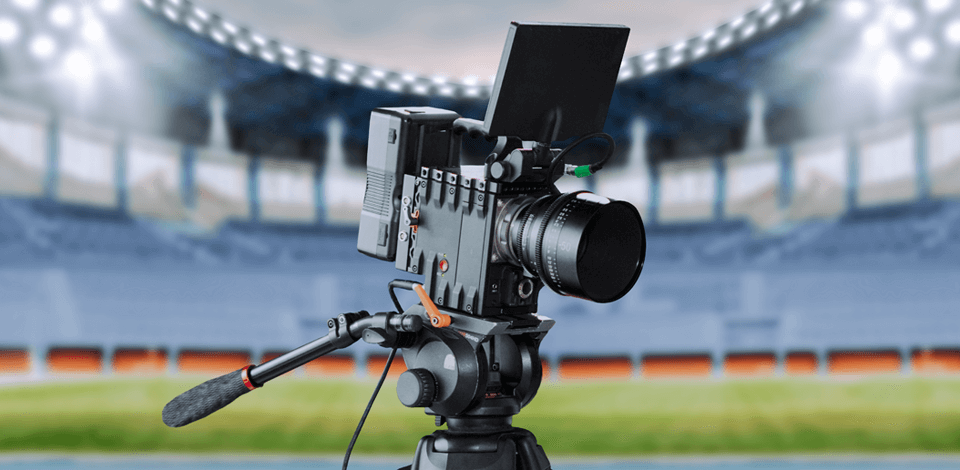
While your smartphone can record footage in decent quality, if you want to take it seriously, it’s important to get the sports video camera that your budget can allow.
Such a camera can offer a framerate of 60fps or even 120fps, which is unattainable for a regular phone camera.
These cameras are also supplied with integrated image stabilization technology, highly precise autofocus with subject tracking support, and a wide dynamic range that helps capture more details in the darkest and brightest parts of the scene.
I covered all the most popular types of video cameras for recording sports for budgets of all sizes. The reviewed models can capture footage in different resolutions and framerates.
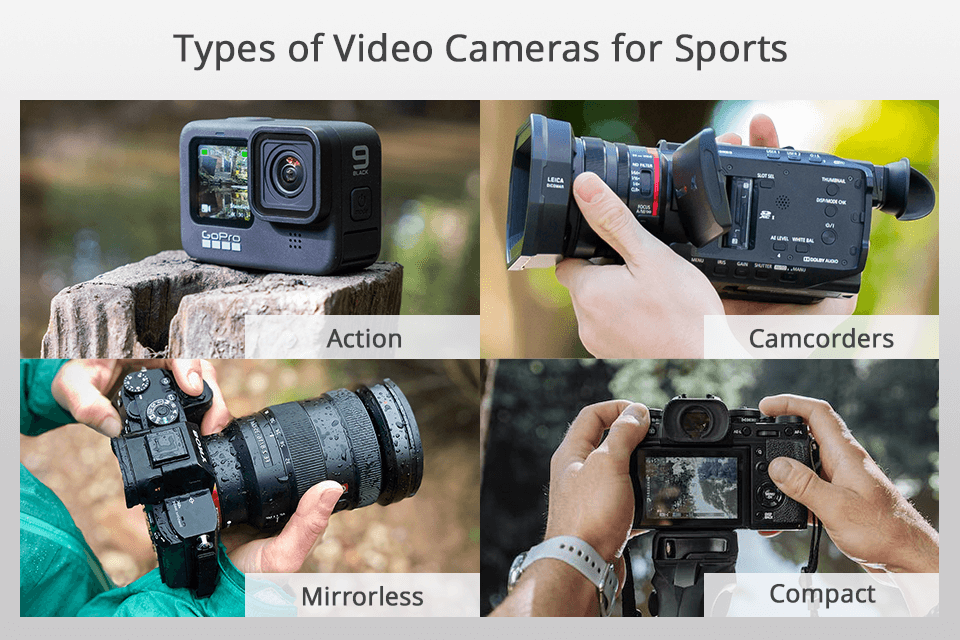
Camcorders. Primarily created for videography, quality camcorders offer an advanced zoom range and long-lasting batteries. You can use them for continuous recording and zooming in on distant subjects. One downside is that they can be bulkier than other types.
Action. Such cameras are praised for their rugged design, waterproof properties, and small size, which is why many people attach them to helmets, bikes, and other sports equipment. If you want to find the best camera to record sports in extreme conditions, with the only major drawback being the lackluster zoom functionality.
Mirrorless. This type provides top-tier recording capabilities as well as swappable lenses, giving you more freedom to receive the results you want. Mirrorless cameras for video recording frequently offer fantastic AF systems that excel at tracking dynamic subjects, which is exactly what you need for sports. Their main weakness is the inferior zoom compared to camcorders.
Compact. These small, lightweight cameras offer the most convenient user experience. Even though their technical capabilities aren’t as impressive compared to other categories, the most expensive models of this type can still offer impressive video quality and AF results, making them a solid option if you’re a casual or a beginner.
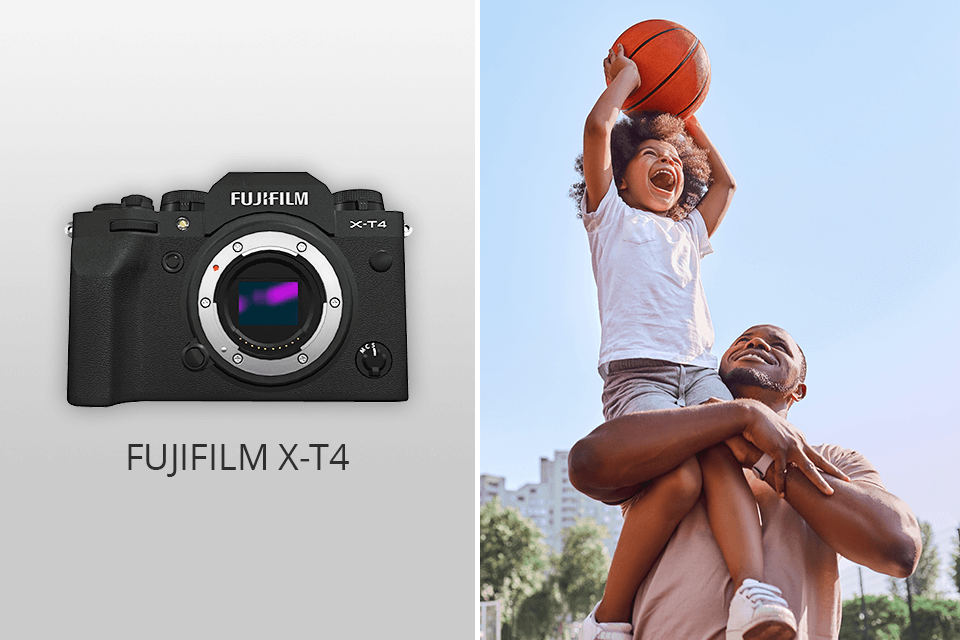
Type: Mirrorless | Video Quality: 4K/60p | Resolution: 26.1MP
The Fujifilm X-T4 is the best camera for recording sports if you’re a beginner primarily due to its terrific integrated image stabilization. It’s invaluable if you’re filming high-octane action while holding the camera in your hands. The flip-out display is also very useful, particularly when recording at high or low angles.
You can use the X-T4 to film sports in 4K at 60fps, which allows you to receive smooth slow-motion footage. Meanwhile, the separate video mode allows you to avoid constantly switching between photography and videography settings.
The biggest drawback of this model is the battery duration of only 30 minutes. Since it uses a proprietary battery, you won’t be able to replace it with another battery from a spare Fujifilm camera you might have at your home.
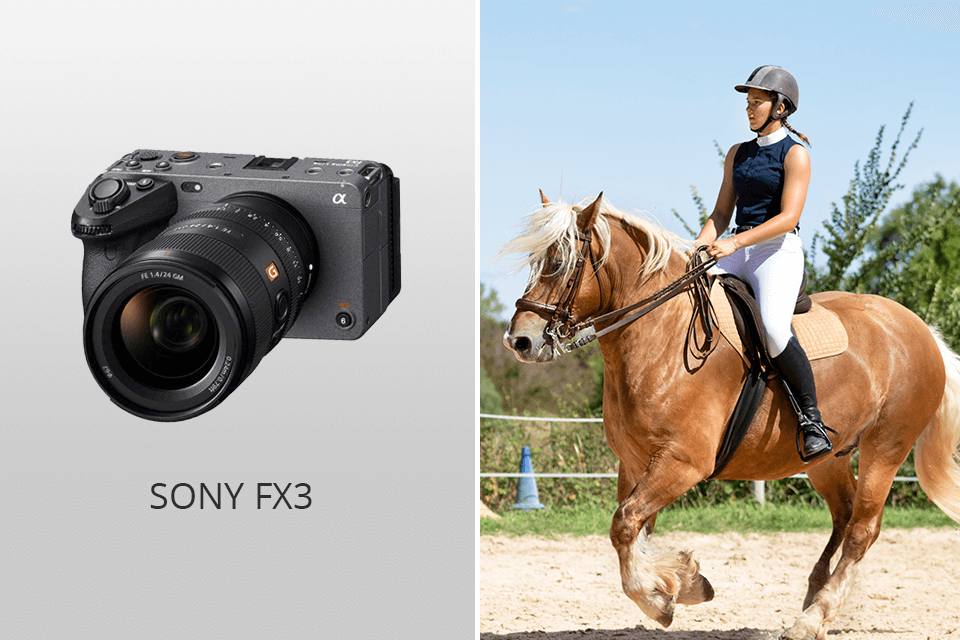
Type: Full Frame, Compact | Video Quality: 4K/120p | Resolution: 10.2MP
The FX3 is equipped with a full-frame sensor, which shines when recording high-octane sports events in 4K resolution at 60fps. It offers crisp, natural colors and beautiful picture quality thanks to the employed S-Cinetone color science.
The removable top handle has pro-level XLR inputs that enable you to record high-fidelity sound without having to purchase a separate recorder, which sets it above the competition in this regard.
Probably the biggest weak point of this sports camera is the display quality. It has a low resolution, which can make it hard to view in broad daylight when recording outdoors.
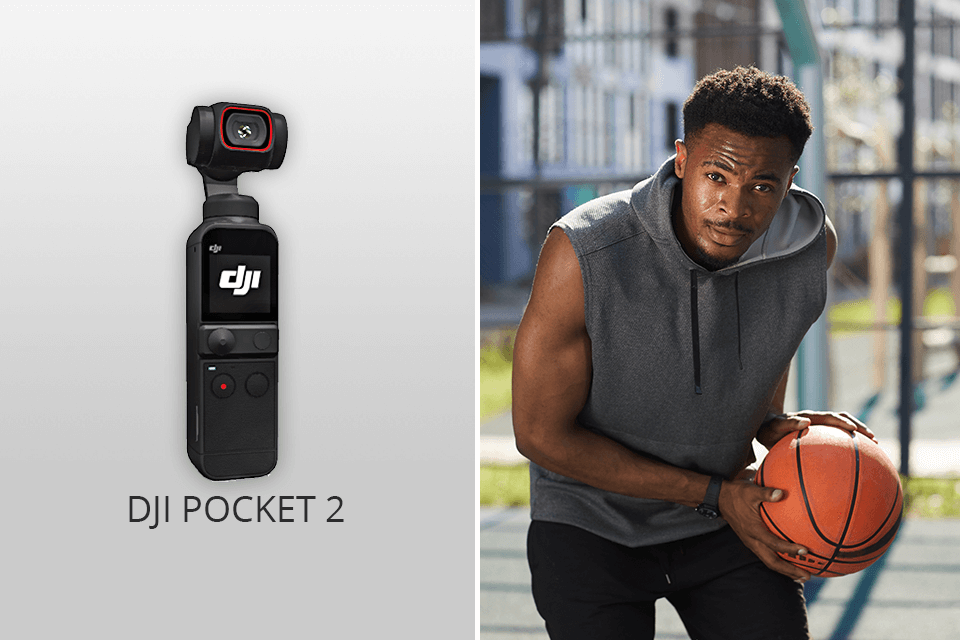
Type: Action | Video Quality: 4K | Resolution: 64MP
DJI Pocket 2 is the best video camera for sports if you value portability above everything else. It supports filming in 4K at 60 frames per second while the 8x zoom is quite solid for such a compact model. Moreover, this camera for skateboarding is supplied with an HDR mode that allows your footage to look more crisp and detailed.
DJI Pocket 2 also offers gimbal-based image stabilization, which is very useful for recording dynamic videos. Meanwhile, ActiveTrack 3.0 technology ensures the athletes and players remain in focus while they’re running around the field.
Several reviews mention excessive noise as the biggest drawback when recording in unfavorable conditions, and the offered dynamic range is also a bit disappointing. As such, if you’ll primarily work in poorly lit environments, you should probably pick a different camera.
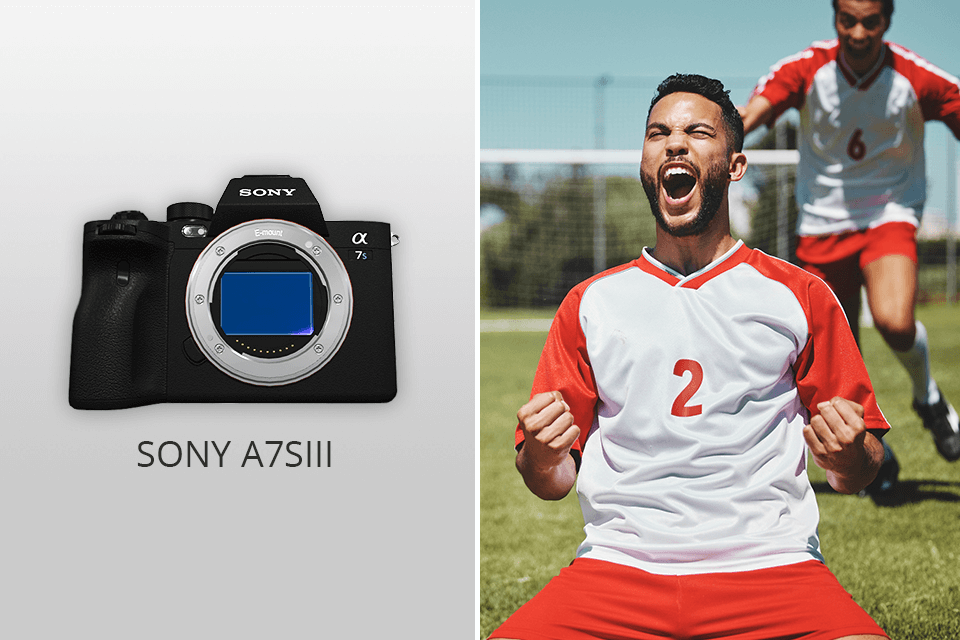
Type: Mirrorless | Video Quality: 4K/120p | Resolution: 12MP
The Sony A7S III is arguably the best camera for sports video recording, as it supports 4K slow-motion capture and its performance doesn’t suffer even in subpar lighting conditions. The 12.1MP sensor included in this Sony camera isn’t all that mindblowing for photography, but it’s perfectly suited for filming high-quality footage at different ISO values and shutter speeds.
The fact that the A7S III can record dynamic footage at 120fps deserves a separate mention. The captured videos are crisp, clear, and smooth, and if you use an E-mount lens with the camera, you’ll be able to focus on fast-moving athletes without any issues.
The body of this model is durable, but it’s not particularly lightweight, so you might notice some fatigue in your arms at the end of a long recording session. This camera is also rather expensive, which is why it might be inaccessible to most hobbyists.

Type: Action | Video Quality: 5.3K/60p | Resolution: 23MP
GoPro Hero10 offers a maximum resolution of 5.3K at 60 frames per second. This way, you can record sports videos with terrific sharpness while the high framerate ensures incredible smoothness even in smooth motion.
The 23MP image sensor allows you to take high-quality, detailed photos and you can also extract stills from the filmed footage.
HyperSmooth 4.0 offers impeccable image stabilization. Regardless of whether you’re riding your bike down a hill or diving into the sea, the video will turn out smooth and stable. This GoPro camera is highly dependable thanks to its waterproof, sturdy body and the employed hydrophobic lens that excels at repelling water.
The main downside of Hero10 is the battery that can drain quite quickly if you’re recording in the cold or leveraging all the advanced features.
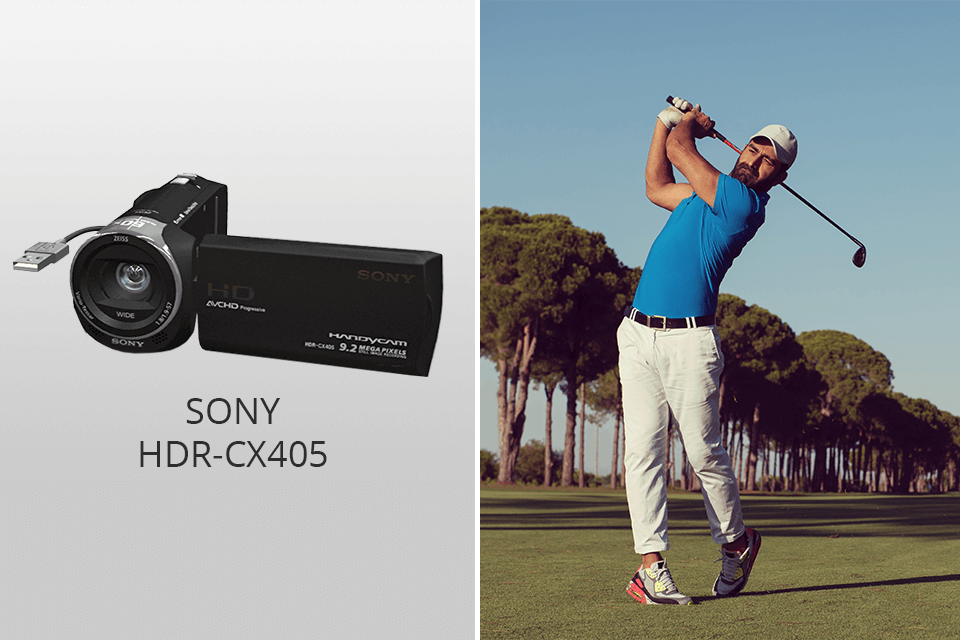
Type: Camcorder | Video Quality: 1920x1080/60P | Resolution: 9.2MP
Sony HDR-CX405 is a great sports recording camera due to its lightweight build and portability, meaning you can bring it with you anywhere. Meanwhile, the Optical SteadyShot system ensures all captured footage doesn’t have any camera shake even if you’re recording on the move. This feature is a lifesaver when filming high-octane sports action.
The HDR-CX405 is also equipped with advanced technology like the Intelligent Auto mode, face detection, and Smile Shutter. The biggest frustration you’re going to have with this camera is the absence of touchscreen controls. If you want to change any parameters, you’ll have to go back to the olden days of using buttons.
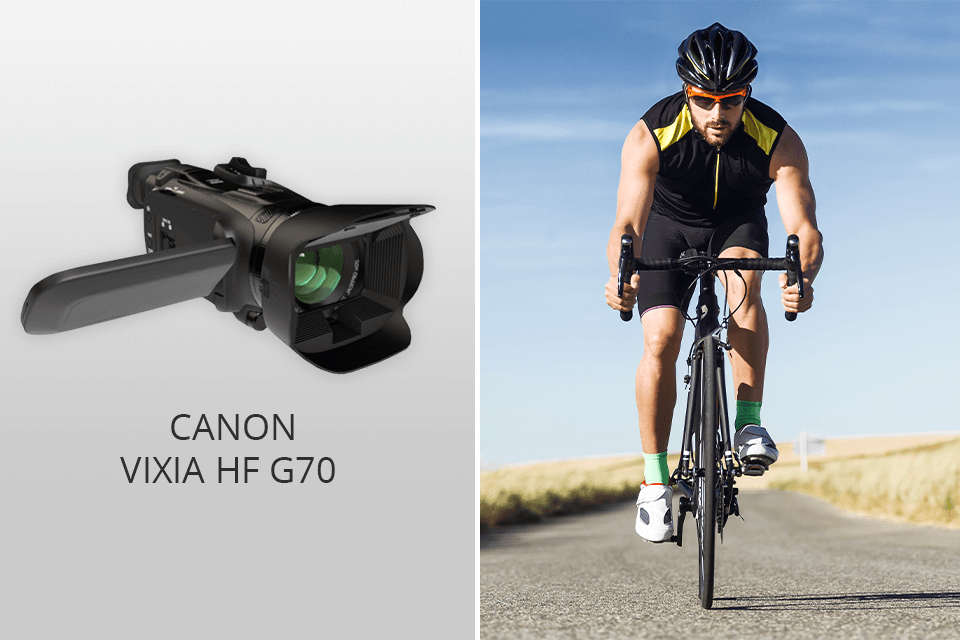
Type: Camcorder | Video Quality: 4K/30P | Resolution: 8.29MP
The most appealing characteristics of this Canon camera are 4K resolution support and the 20x optical zoom lens. Such specifications allow you to record sharp, detailed footage even when working at fast-paced sports events.
The AF system also works quite well. It’s quick, offers face tracking, and ensures the subject remains in focus even when they’re running around or sprinting. The biggest drawback of the VIXIA HF G70 is its performance in poor lighting.
It’s acceptable due to the offered f/1.8 aperture, but the recorded footage won’t look as crisp compared to some of the cameras reviewed above.
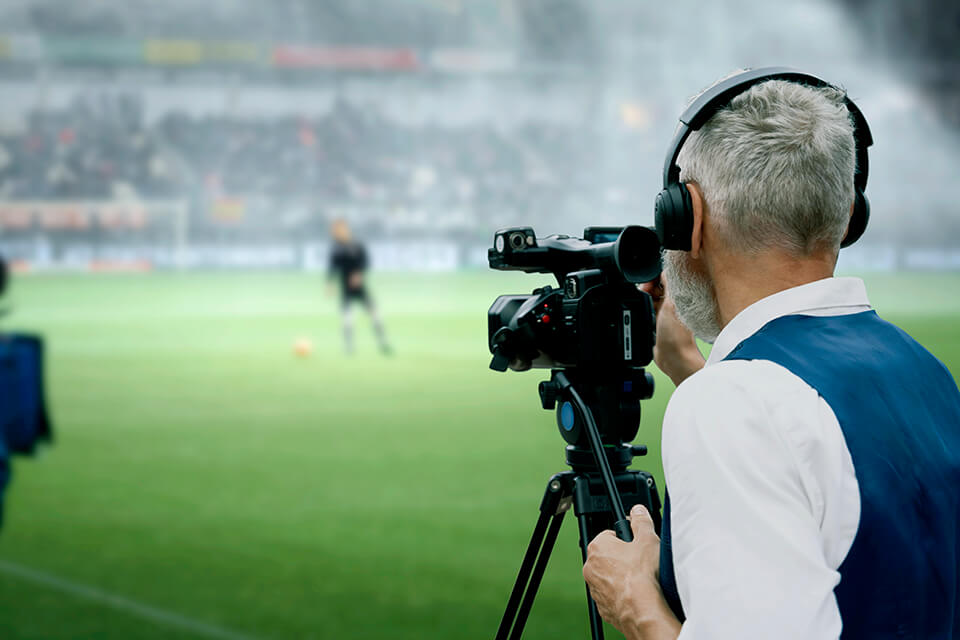
Even the best camera for sports videography might not provide the results you need in certain conditions if you don’t pair it with appropriate accessories. You should consider getting:
Telephoto lenses. Most events need to be filmed with longer lenses since you’re unlikely to be on the track or field with the athletes. Prioritize models with an f/2.8 aperture as long as you can afford them. If you’re still a beginner, then f/4 is an option too.
Quality tripod. Buy one of the available leveling base video tripods since they allow you to adjust the camera to the horizon without moving the tripod stands. A tripod is essential for ensuring your sports videos aren’t shaky when panning the shot from side to side, especially if your camera lacks quality image stabilization.
Zoom rocker. It can be connected wirelessly and it sends the zoom signal without draining the battery. The zoom speed is changed by adjusting the rocker’s angle.
Shotgun mic. Most integrated microphones aren’t meant for recording pro-grade sound that you’d like to include in the final video. It’s highly recommended you buy a quality microphone setup to ensure the sound quality matches the picture.
Plenty of batteries/memory cards. To ensure you never miss an important moment.
When picking the best video camera for sports, the main aspects you have to account for are portability, zoom functionality, sturdiness, and the support of swappable lenses to accommodate various sports events and recording conditions.
Resolution. Even though 4K resolution is all the rage right now, you need to remember that footage recorded in 4K quality requires both more space and a more powerful video editing PC. If you’re just starting, 1080p should cover all of your needs.
However, if you’re an enthusiast or a professional, then 4K is definitely the recommended resolution since it will soon become the main industry standard.

Frame rate. If you’re a fan of epic slow-motion sports videos, it’s recommended to get a camera that can record at 120fps or higher. The downside here is that higher framerates lead to less light accessing the camera sensor, which is why the picture quality can suffer if the lighting at the event is insufficient.
Image stabilization. Some video cameras for YouTube and other web platforms come with integrated image stabilization that eliminates camera shake even if your hands aren’t always steady during recording.
Autofocus. It’s paramount to get a sports video camera that can keep its focus on the subject no matter what they’re doing. Leading models come with eye-tracking autofocus that ensures even subjects like surfers or bikers remain sharp and clear in your videos.
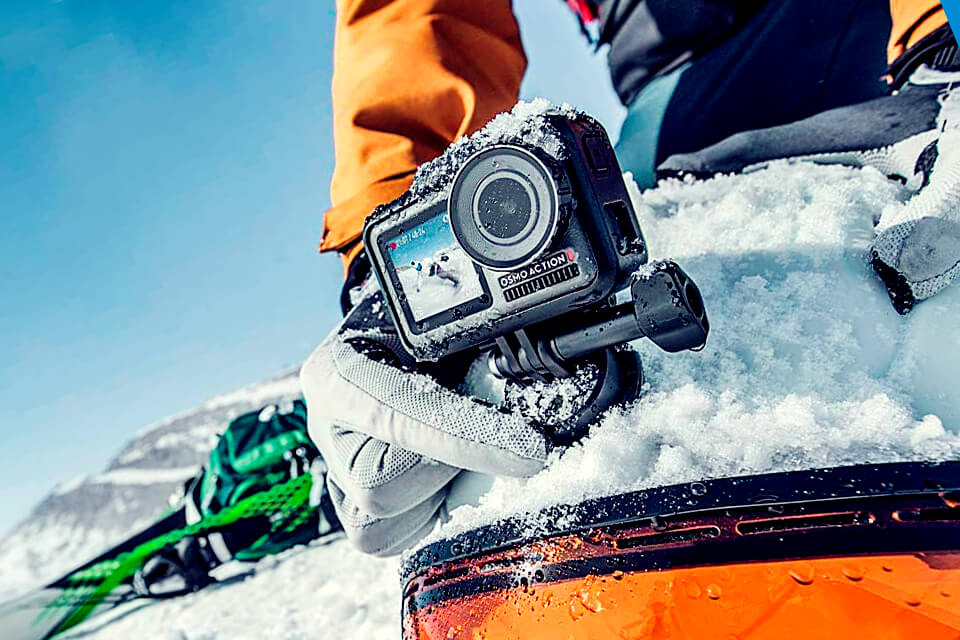
Weather-sealed. Water-resistant and dust-protection properties allow you to use a camera even during a drizzle or a strong wind. The last thing you want is to stop recording a nail-biting match because your expensive camera can’t handle some light rainfall.
| Fujifilm X-T4 | Sony FX3 | DJI Pocket 2 | |
|---|---|---|---|
|
Video Quality |
4K/60p |
4K/120p |
4K |
|
Low-Light |
✔️ |
✔️ |
✔️ |
|
Low-Light |
✔️ |
✔️ |
❌ |
|
Zoom |
0.75x |
Depends on the lens |
8x |
|
Battery Life |
30 min |
90 min |
140 min |
|
Weather Resistance |
✔️ |
✔️ |
❌ |
|
Suitable Video Genres |
Action sports, outdoor activities |
Fast-paced sports, cinematic shots |
On-the-go shooting, vlogging |
I performed in-depth testing of 3 cameras made by popular camera brands and used them to record sports videos.
The X-T4 allows you to film in 4K at 60fps, which is great for slow-motion capture and producing smooth highly dynamic videos. The FX3 elevates the maximum framerate to 120fps, enabling you to record players rushing up and down the field in cinematic quality.
While The Pocket 2 is much smaller in size, it also supports 4K 60fps recording while taking advantage of the ActiveTrack 3.0 system to perform subject tracking and ensure your video is never blurry or out of focus.
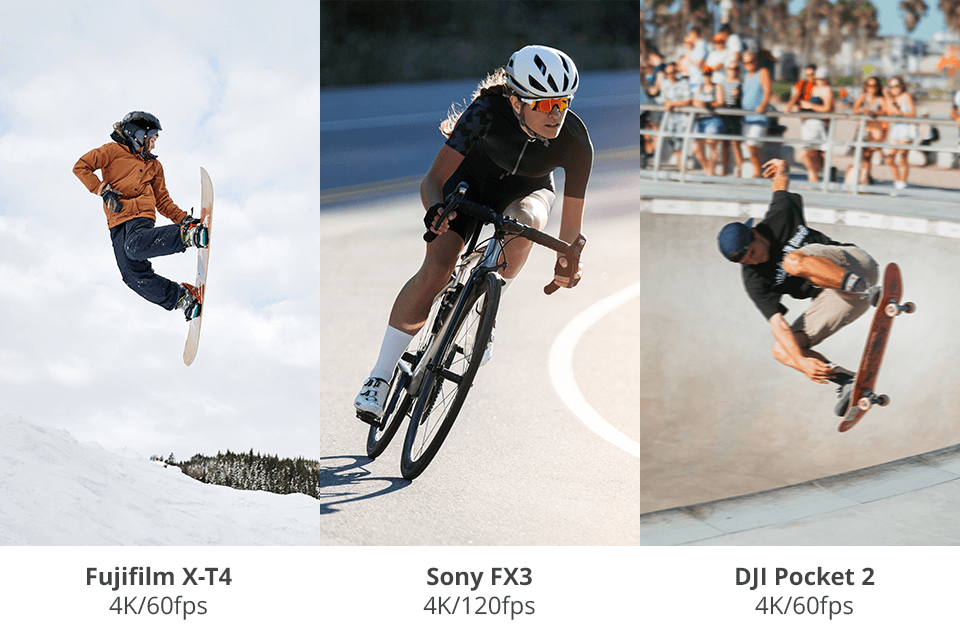
Each model is aimed at a slightly different target audience: the X-T4 is the most versatile video camera for sports, the FX3 offers the highest speeds, while the Pocket 2 is the king of portability. You have to account for your specific needs and taste to determine the strengths of which camera appeal to you the most.
I suggest getting the Fujifilm X-T4 if you’re a beginner, or the Sony FX3 if you need a camera for professional use.
It’s a good idea to set the shutter speed to double the chosen frame rate (e.g., 1/120th when recording at 60 fps). I also suggest sticking to the smallest aperture available (F/2.8) as long you don’t experience any focusing problems. Once you’ve set those two parameters, choose an ISO value that matches the previous two settings and provides the best picture quality.
If you’re doing sports videography, 60fps is the bare minimum you should be working with. You want the viewers to enjoy smooth footage and since sports constantly involve fast-moving subjects, a framerate below 60fps will not be able to capture them properly, and slow-motion replays will also be out of the question.